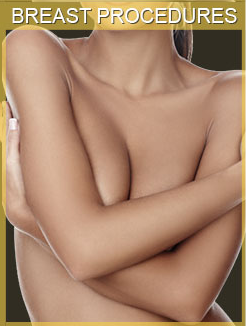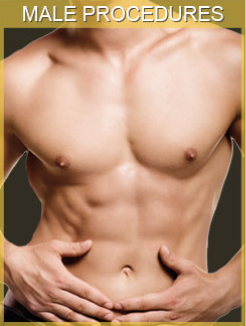Sagging lids, puffiness, and loose skin around the eyes can make you look older than you feel. Eyelid surgery in Newark and New Castle County, DE, at Mehdi Balakhani, MD can help refresh your appearance. Your blepharoplasty consultation is the first step toward safe, natural-looking results from a plastic surgeon experienced in eyelid surgery.
Table of Contents
- What Is Eyelid Surgery?
- Why Eyelid Surgery
- Is It Right for Me?
- Procedural Steps
- Important Facts About the Safety and Risks of Eyelid Surgery
- Eyelid Surgery Recovery
- What Results to Expect
- Benefits of Eyelid Surgery
- How Much Will Eyelid Surgery Cost?
- Why Choose Mehdi Balakhani MD for Eyelid Surgery?
- Frequently Asked Questions
- Contact Us Today
- Words to Know
What Is Eyelid Surgery?
Also known as blepharoplasty, eyelid surgery improves the appearance of the upper, lower, or both eyelids. It rejuvenates the surrounding area of your eyes, making you look more rested and alert. In some cases, it can improve vision by lifting drooping lids. The procedure is often performed independently or paired with a facelift or brow lift surgery in Delaware for more complete facial enhancement.
Why Eyelid Surgery?
Cosmetic eyelid surgery is a surgical procedure to improve the appearance of the upper eyelids, lower eyelids, or both. Specifically, eyelid surgery can treat:
- Loose or sagging skin that creates folds or disturbs the natural contour of the upper eyelid, sometimes impairing vision
- Excess fatty deposits that appear as puffiness in the upper eyelids
- Bags under the eyes
- Droopiness of the lower eyelids, showing white below the iris (colored portion of the eye)
- Excess skin and fine wrinkles of the lower eyelid
Is It Right for Me?
Eyelid surgery is usually performed on adult men and women with healthy facial tissue and muscles and realistic goals for improving the upper and/or lower eyelids and surrounding area.
You should do it for yourself, not fulfill someone else’s desires or try to fit any ideal image. Good candidates are:
- Healthy individuals who do not have a life-threatening illness or medical conditions that can impair healing
- Non-smokers
- Individuals with a positive outlook and specific goals in mind for blepharoplasty
- Individuals without serious eye conditions
You must tell Dr. Mehdi Balakhani if you have any of these medical conditions:
- Eye disease, such as glaucoma, dry eye, or a detached retina
- Thyroid disorders, such as Graves’ disease, and under- or overactive thyroid
- Cardiovascular disease, high blood pressure, or other circulatory disorders, or diabetes
Procedural Steps
What happens during eyelid surgery?
Step 1 – Anesthesia
Medications are administered for your comfort during the surgical procedure. The choices include intravenous sedation or general anesthesia. Dr. Balakhani will recommend the best choice for you.
Step 2 – The incision
The incision lines for eyelid surgery are designed to conceal scars within the natural structures of the eyelid region.
Droopy conditions of the upper eyelid can be corrected through an incision within the natural crease of the upper eyelid. This allows fat deposits to be repositioned, muscles and tissue tightened, and excess skin removed.
Conditions of the lower eyelid may be corrected with an incision just below the lower lash line. Through this incision, excess skin in the lower eyelids is removed.
A transconjunctival incision, one hidden inside the lower eyelid, is an alternate technique to correct lower eyelid conditions and redistribute or remove excess fat.
Step 3 – Closing the incisions
Eyelid incisions are typically closed with the following:
- Removable or absorbable sutures
- Skin adhesives
- Surgical tape
Mehdi Balakhani, DDS, MD, FACS, may use a laser chemical peel to erase dark discoloration of the lower eyelids.
Step 4 – See the results
The results of blepharoplasty will appear gradually as swelling and bruising subside to reveal a smooth, better-defined eyelid and surrounding region, as well as an alert and rejuvenated appearance.
Important Facts About the Safety and Risks of Eyelid Surgery
The decision to have eyelid surgery is extremely personal, and you’ll have to decide if the benefits will achieve your goals and if the risks and potential complications are acceptable. It would help if you look through our blepharoplasty before and after photos of successful eyelid surgery for our happy patients.
Like any surgical procedure, blepharoplasty carries some risks, though serious complications are rare when performed by a qualified plastic surgeon like Dr. Balakhani. He and our staff will explain the risks associated with surgery in detail. You will be asked to sign consent forms to ensure that you fully understand the procedure you will undergo and any risks or potential complications.
Common and temporary side effects
- Swelling, bruising, and mild discomfort
- Dry or irritated eyes
- Temporary blurred vision or sensitivity to light
- Tightness around the eyes
Potential risks (less common)
- Infection or poor wound healing
- Excess bleeding (hematoma)
- Fluid buildup
- Difficulty closing eyes fully
- Lid lag (temporary lower eyelid droop)
- Ectropion (outward turning of the eyelid)
- Skin discoloration or prolonged swelling
- Changes in skin sensation or numbness
- Pain that may persist beyond normal healing
- Sutures surfacing through the skin or causing irritation
- Allergic reaction to anesthesia or medications
Rare but serious risks
- Blood clots, including deep vein thrombosis
- Cardiac or pulmonary complications
- Vision loss (extremely rare)
- Need for revisional surgery
It’s important to know that many of these risks can be minimized with proper care.
Risk-reduction tips
- Stop smoking at least several weeks before and after surgery. Smoking impairs circulation and slows healing.
- Closely follow Dr. Balakhani’s pre- and post-operative instructions.
- Use prescribed medications as directed to manage swelling and prevent infection.
- Avoid rubbing or applying pressure to the eyes while healing.
- Elevate your head when resting or sleeping to reduce swelling.
- Limit strenuous activities for a few weeks post-surgery.
Be sure to ask questions
It’s very important to ask your plastic surgeon questions about your eyelid procedure. It’s natural to feel some anxiety, whether it’s excitement for your anticipated new look or a bit of preoperative stress. Don’t be shy about discussing these feelings with Dr. Balakhani.
A special note about the use of fibrin sealants (tissue glue)
Fibrin sealants (made from heat-treated human blood components to inactivate virus transmission) hold tissue layers together at surgery and diminish post-operative bruising.
This product has been carefully produced from screened donor blood plasma for hepatitis, syphilis, and human immunodeficiency virus (HIV). It has been used safely for many years as sealants in cardiovascular and general surgery. This product is thought to help diminish surgical bleeding and adhere layers of tissue together.
When you go home
If you experience shortness of breath, chest pains, or unusual heartbeats, seek medical attention immediately. You may require hospitalization and additional treatment if any of these complications occur.
The practice of medicine and surgery is not an exact science. Although good results are expected, there is no guarantee. In some situations, achieving optimal results with a single surgical procedure may not be possible, and another surgery may be necessary.
Be careful
Following your physician’s instructions is key to the success of your surgery. The surgical incisions mustn’t be subjected to excessive force, abrasion, or motion during healing. Our team will give you specific instructions on how to care for yourself.
Eyelid Surgery Recovery
After your procedure is completed, lubricating ointment and cold compresses may be applied, and in some cases, your eyes may be loosely covered with gauze.
You will be given specific instructions that may include how to care for your eyes, medications to apply or take orally to aid healing and reduce the potential for infection, specific concerns to look for at the surgical site or in your overall health, and when to follow up with your eyelid surgeon.
Initial healing may include some swelling, bruising, irritation, or dry eyes, and discomfort that can be controlled with medication, cold compresses, and ointment. Irritation at the incision sites is also possible.
A special note: You must practice diligent sun protection and use darkly tinted sunglasses until the healing process is fully complete.
What Results to Expect
Recovery after blepharoplasty follows a gradual timeline, with most patients resuming light activities within a few days. Here’s what you can generally expect:
- Days 1–3: You may experience mild to moderate bruising, swelling, and tightness around the eyes. Use cold compresses, keep your head elevated, and follow all aftercare instructions to ease discomfort and minimize inflammation.
- Week 1: Most swelling and bruising start to improve. Stitches are often removed after 5–7 days. By the end of this week, many patients feel comfortable returning to non-strenuous work.
- Weeks 2–3: Residual swelling and discoloration continue to fade. You may resume light exercise after two weeks, but always check with Dr. Balakhani first.
- After 1 month: Most visible signs of surgery have resolved. You can typically return to full activity and exercise. Makeup can usually be worn to cover minor discoloration after the first two weeks.
- Final results: Your eyes will look more refreshed as healing progresses. Incision lines may take several months to a year to fully refine, but they often become barely noticeable.
To speed up recovery and ensure optimal results, avoid smoking, limit sun exposure, and follow your post-operative care plan closely. Wearing sunglasses, staying hydrated, and getting adequate rest can also support healing.
While eyelid surgery can be expected to correct certain conditions permanently, you will continue to age naturally. Lifelong sun protection will help to maintain your results.
Benefits of Eyelid Surgery
- Helps reduce upper eyelid sagging
- Improves visual field (in some cases)
- Minimizes puffiness under the eyes
- Enhances overall facial appearance
How Much Will Eyelid Surgery Cost?
Cost is always a consideration in elective surgery. Prices for blepharoplasty can vary widely. A surgeon’s cost for the eyelid surgery procedure may vary based on the complexity of your case and the surgical technique used.
Cost may include:
- Surgeon’s fee
- Hospital or surgical facility costs
- Anesthesia fees
- Prescriptions for medication
- Medical tests
At Dr. Balakhani’s practice, financing options are available through CareCredit, allowing you to finance up to 100% of your procedure with no annual fees.
Insurance may cover a portion of the cost if your eyelid surgery is deemed medically necessary, such as when sagging skin obstructs your vision. You may need a visual field test or referral from your primary care provider in these cases. Check with your insurance provider and review your policy in detail.
You may also be able to use Flexible Spending Accounts (FSAs) or Health Savings Accounts (HSAs) to pay for certain medically necessary portions of your blepharoplasty procedure.
Why Choose Mehdi Balakhani, MD for Eyelid Surgery?
With over 30 years of experience, Mehdi Balakhani, DDS, MD, FACS, brings a thoughtful, balanced approach to every eyelid surgery. He believes that outstanding results come from combining surgical expertise and compassionate care, two elements he has refined throughout decades in practice.
Consistently recognized by peers and nurses alike, Dr. Balakhani has been named a top doctor in Delaware every year since 1992. As a board-certified plastic and reconstructive surgeon, he offers trusted care with a deep understanding of facial anatomy and aesthetics.
At the Mehdi Balakhani MD practice that serves Newark and New Castle County, DE, you can expect personalized attention, advanced techniques, and a commitment to safety and natural-looking results. From your consultation to recovery, you’re in experienced hands.
Frequently Asked Questions
Contact Us Today
If droopy eyelids or under-eye bags make you look more tired than you feel, it may be time to consider eyelid surgery in Newark and New Castle County, DE. Mehdi Balakhani, DDS, MD, FACS, brings over three decades of surgical expertise to every procedure, helping patients achieve natural, refreshed results. Schedule your eyelid surgery today to learn more about your options and get personalized guidance in a one-on-one consultation.
Words to Know
- Blepharoplasty: Eyelid surgery to improve the appearance of upper eyelids, lower eyelids, or both
- Ectropion: When the lower eyelid is rolled outward after eyelid surgery, often a temporary condition
- General anesthesia: Drugs and/or gases used during an operation to relieve pain and alter consciousness
- Hematoma: Blood pooling beneath the skin
- Intravenous sedation: Sedatives administered by injection into a vein to help you relax
- Local anesthesia: A drug injected directly into the site of an incision during an operation to relieve pain
- Transconjunctival incision: Incision hidden inside the lower eyelid
- Skin resurfacing: Treatment to improve the texture, clarity, and overall appearance of your skin
- Sutures: Stitches used by surgeons to hold skin and tissue together








